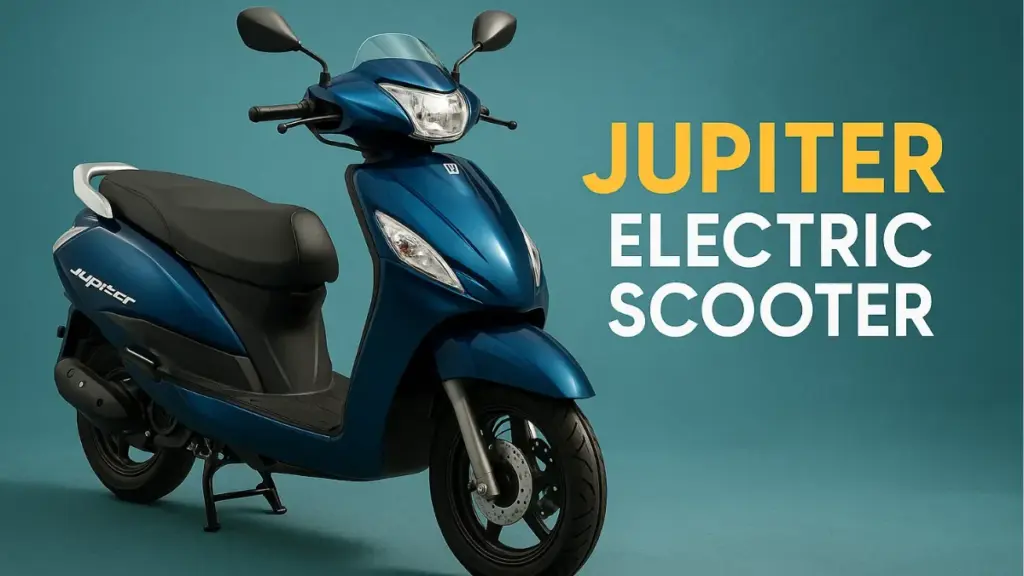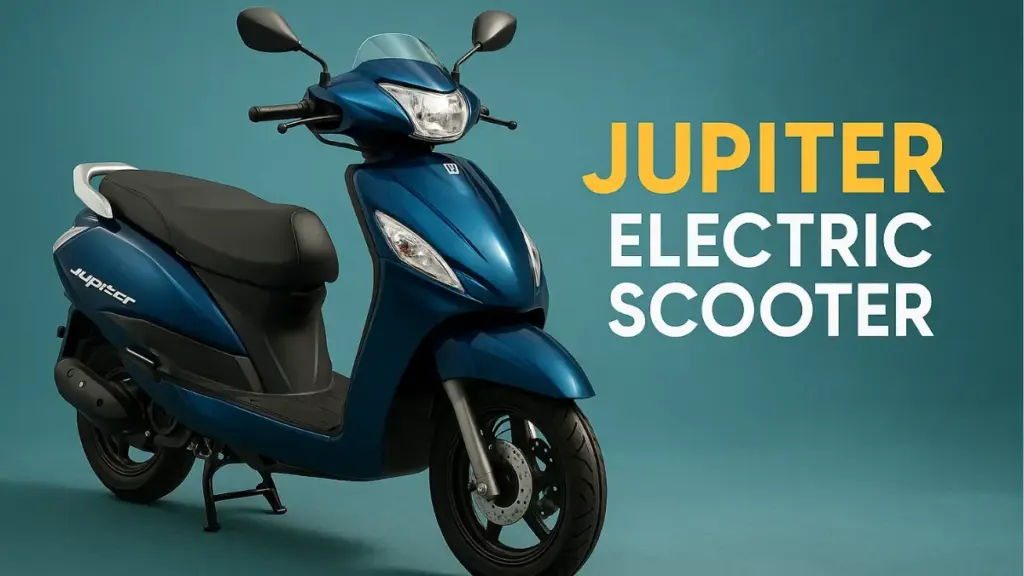Introduction
With the rapid shift toward electric mobility in India and across the world, leading two-wheeler manufacturers are stepping into the EV segment. TVS, already known for its reliable scooters like the Jupiter, has joined this revolution with the Jupiter Electric Scooter. Built on the legacy of the best-selling petrol variant, the Jupiter Electric is designed to combine the practicality, comfort, and performance that riders trust—with the added benefits of zero emissions and low running costs.
In this comprehensive review, we’ll dive into the design, performance, riding comfort, features, charging infrastructure, and why the TVS Jupiter Electric Scooter could soon become one of the most popular EV scooters in India.
Design and Styling
The Jupiter Electric Scooter retains the elegant and practical design language of its petrol sibling but with subtle futuristic touches. Expect aerodynamic lines, LED lighting, and a modern front apron that emphasizes its EV identity. The scooter balances a family-friendly look with premium styling, making it suitable for both young riders and daily commuters.
Key highlights include:
- Sleek body panels with EV-inspired decals.
- LED headlamps and taillamps for improved visibility.
- Spacious floorboard for better comfort.
- Practical under-seat storage designed to accommodate a helmet and charger.
The scooter’s overall appearance blends practicality with modern aesthetics, making it appealing to a wide range of customers.
Battery and Performance

At the heart of the Jupiter Electric Scooter is its lithium-ion battery pack, engineered to deliver reliable performance and efficiency. Depending on the variant, riders can expect a range of 80–110 km per charge, which is suitable for daily commutes and short city trips.
Performance-wise, the electric motor produces instant torque, ensuring smooth acceleration right from a standstill. With a top speed of around 75 km/h, it is perfect for urban conditions where agility and quick acceleration matter more than outright speed.
Charging times vary depending on the charger used. With a standard charger, the battery can be charged in 4–5 hours, while a fast charger reduces this time significantly to around 1–2 hours. This flexibility makes the scooter convenient for city users who may not always have time for long charging sessions.
Riding Comfort and Ergonomics
TVS has ensured that the Jupiter Electric Scooter carries forward the comfort-oriented design of the Jupiter series. The upright riding posture, wide seat, and roomy footboard ensure comfort for both rider and pillion.
The suspension setup—telescopic forks at the front and a monoshock at the rear—absorbs potholes and uneven road surfaces with ease. This makes the scooter an excellent choice for Indian road conditions.
Additionally, the ergonomics are designed for hassle-free city rides. The lightweight chassis and low center of gravity make it easy to maneuver through traffic and park in tight spaces.
Handling and Braking
The Jupiter Electric is designed with urban practicality in mind. Its lightweight structure makes it nimble, while the tubeless tires provide grip and stability on different road surfaces.
Braking duties are handled by disc brakes (in higher variants) and drum brakes in the base version, paired with Combi-Braking System (CBS) or ABS depending on the model. These safety features ensure reliable stopping power even in emergency situations.
Features and Technology
As an electric scooter for 2025, the Jupiter Electric is expected to be packed with smart features, making it more advanced than its petrol counterpart. Some of the key features include:
- Fully digital instrument cluster with battery status, range estimator, speedometer, and trip meter.
- Smartphone connectivity through a dedicated app, offering navigation, call alerts, and service reminders.
- Multiple riding modes (Eco, Normal, Sport) to balance range and performance.
- Reverse assist mode to help with parking in tight spaces.
- Regenerative braking to recharge the battery while slowing down.
- USB charging port for on-the-go charging of devices.
These features ensure that the Jupiter Electric is not just an eco-friendly ride but also a smart and connected scooter for modern commuters.
Charging Infrastructure and Convenience
One of the main concerns for EV owners is charging infrastructure. TVS is actively working to expand its network of fast-charging stations across India. Additionally, the scooter supports home charging, making it easy for owners to charge overnight.
For apartment dwellers, portable charging options allow the battery to be removed and charged indoors. This flexibility makes the Jupiter Electric a practical choice even for users without dedicated parking spots.
Cost Efficiency and Savings
Switching from petrol to electric mobility significantly reduces running costs. On average, the Jupiter Electric consumes around ₹0.20–₹0.30 per km, compared to ₹2–₹3 per km for petrol scooters. Over time, this translates into huge savings on fuel.
Moreover, EVs require lower maintenance since they have fewer moving parts. There’s no engine oil change, clutch maintenance, or frequent servicing, making it more economical in the long run.
Government incentives such as the FAME-II subsidy and state-level EV policies further reduce the upfront cost of purchasing the Jupiter Electric.
Pros and Cons of Jupiter Electric Scooter
Pros:
- Zero emissions and eco-friendly mobility
- Low running and maintenance costs
- Modern design with premium features
- Smart connectivity and riding modes
- Comfortable and practical for city use
Cons:
- Limited charging infrastructure in some areas
- Higher initial cost compared to petrol scooters
- Range anxiety for long-distance users
Jupiter Electric vs Rivals
The Jupiter Electric will face stiff competition from established EV scooters such as the Ola S1 Pro, Ather 450X, Bajaj Chetak Electric, and Hero Vida V1.
- Compared to the Ola S1 Pro, the Jupiter Electric offers more traditional styling and a reputation for reliability.
- Against the Ather 450X, it may not be as performance-focused but is expected to be more affordable and practical.
- When placed beside the Bajaj Chetak Electric, the Jupiter Electric aims to appeal to family riders who want both modern technology and conventional usability.
In short, the Jupiter Electric carves its niche by offering a mix of practicality, affordability, and smart features.
Future of the Jupiter Electric Scooter
As India pushes towards electric mobility, scooters like the TVS Jupiter Electric will play a crucial role in transforming urban transportation. With government support, expanding charging networks, and increasing consumer demand for eco-friendly alternatives, the Jupiter Electric is well-positioned to become a market leader in its category.
Conclusion
The TVS Jupiter Electric Scooter is more than just an eco-friendly alternative—it is a practical, stylish, and future-ready solution for urban mobility. With its impressive range, comfort-focused design, smart features, and cost savings, it strikes the perfect balance between convenience and sustainability.
For daily commuters who want to save money on fuel while contributing to a cleaner environment, the Jupiter Electric is a strong contender in 2025. It is not just a scooter; it’s a step toward the future of urban commuting.


